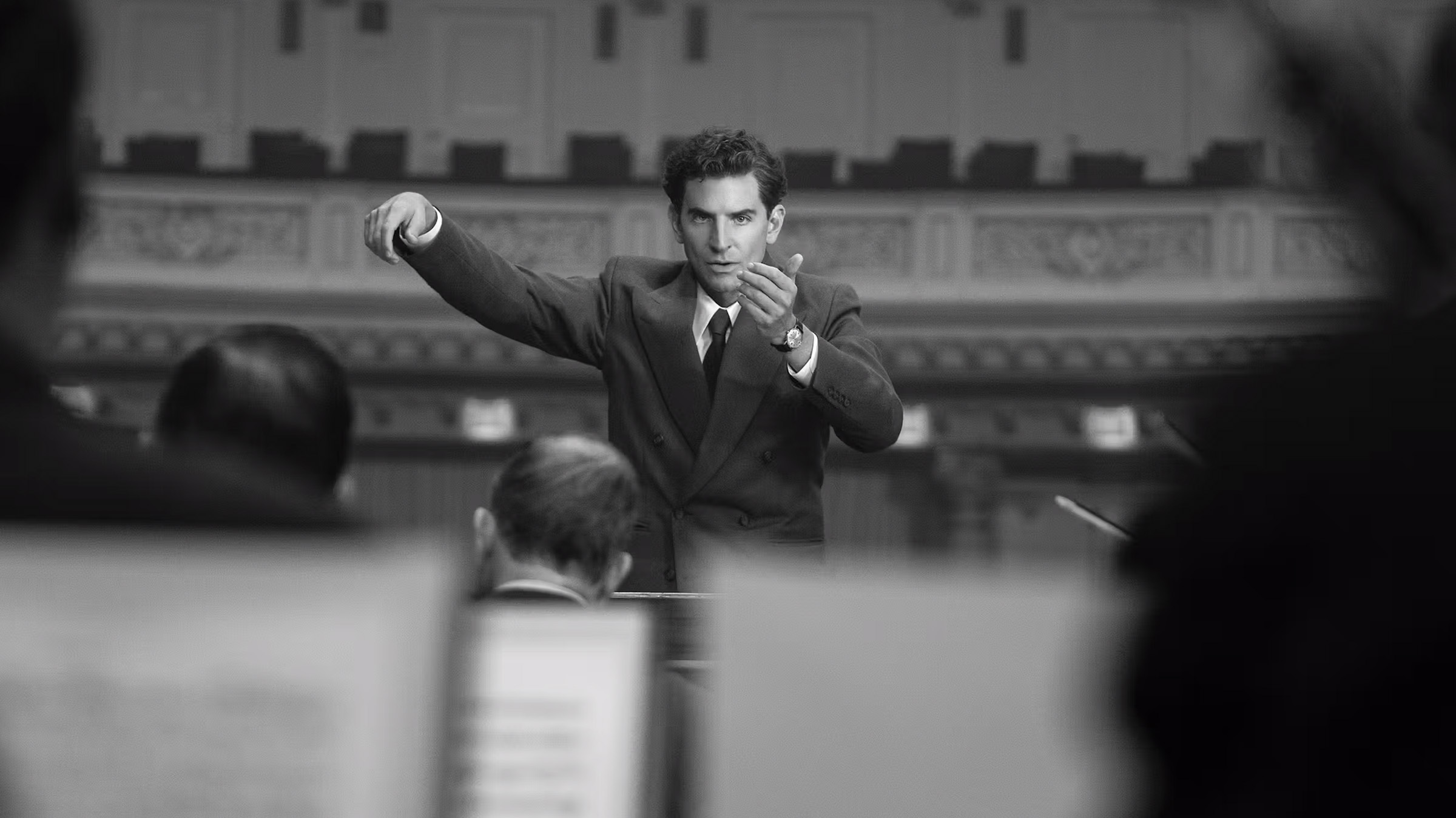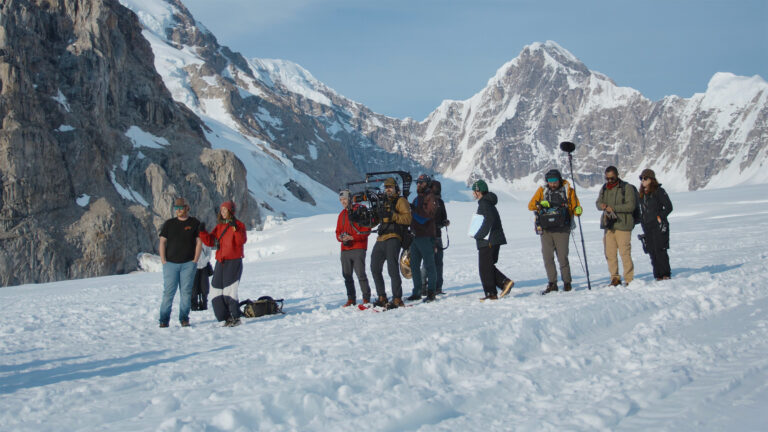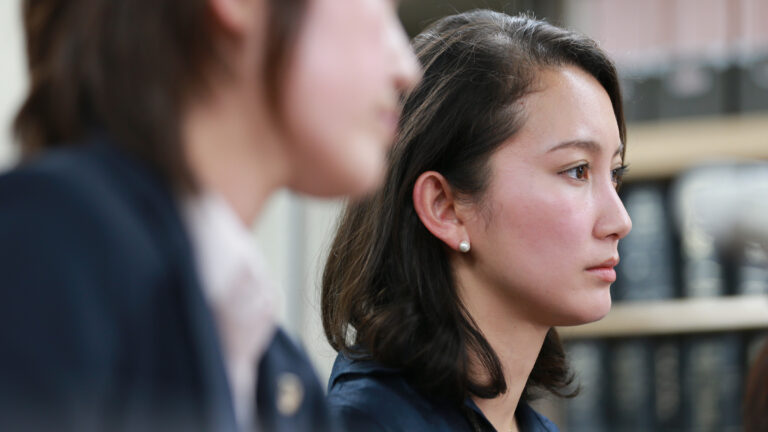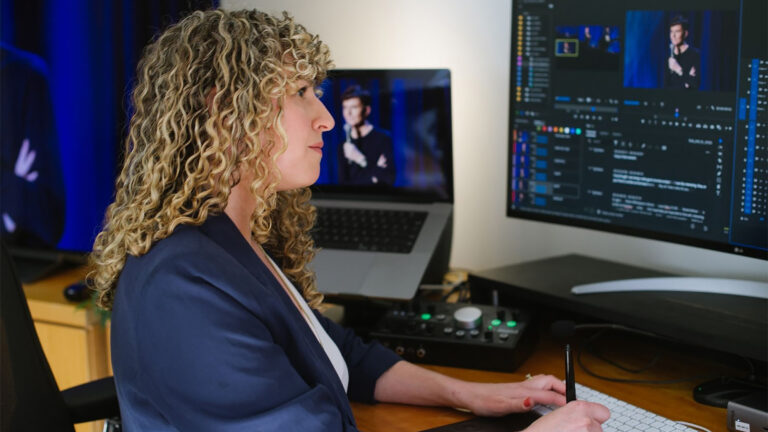Maestro editor Michelle Tesoro, ACE is no stranger to cutting movies directed by actors. In fact, it was while she was working with actor Sean Penn on his film Flag Day that Penn told Michelle that he texted friend Bradley Cooper that she was a “goddess in the cutting room.” Clearly, that pitch worked as Cooper entrusted Michelle with the editorial duties for his much-anticipated biopic.
Summary for Maestro
Maestro chronicles the fearless love story and complicated lifelong relationship between music legend Leonard Bernstein and his wife Felicia Montealegre Cohn Bernstein.
In our discussion with MAESTRO editor Michelle Tesoro, we talk about:
- Putting together a proof of concept
- When Sean Penn texts his friends about you
- Taking notes from Spielberg and Scorsese
- Quietly doing sound design
- Who the real Maestro is
Listen while you read…
Editing Maestro
Matt Feury: Before Maestro, your last two projects were The Queen’s Gambit, which showed what a fantastic editor you are, and Flag Day, directed by Sean Penn, which showed you can work well with actors who become directors. How did that all parlay into you getting the job cutting Maestro for Bradley Cooper?
Michelle Tesoro, ACE: Bradley and Sean are friends. I believe they worked together on Licorice Pizza. I feel like they’ve known each other longer than that, although I don’t know that for a fact. I was working with Sean on Flag Day and I remember cutting with him at Wylie Stateman’s place at 247SND in Topanga, and we were using their main mix stage as a cutting room. I plugged in my computer and my Avid into their thing so we could cut with this huge screen because it was still 2021 and everyone was trying to social distance.
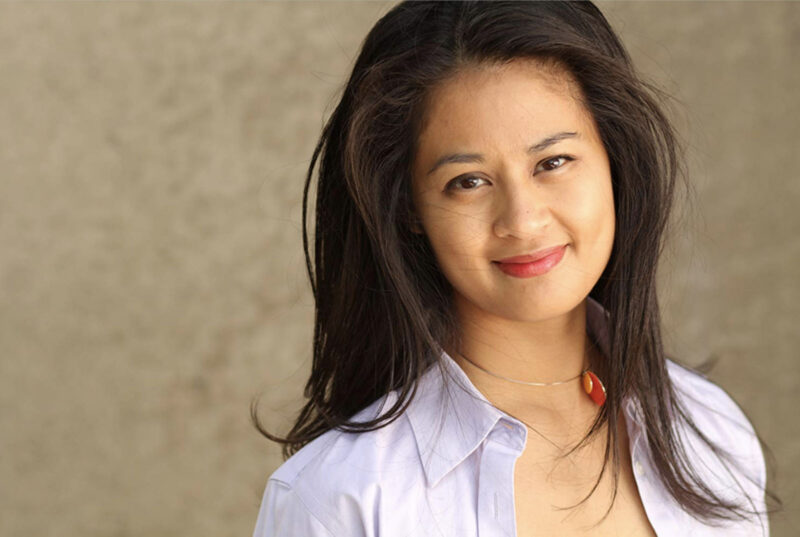
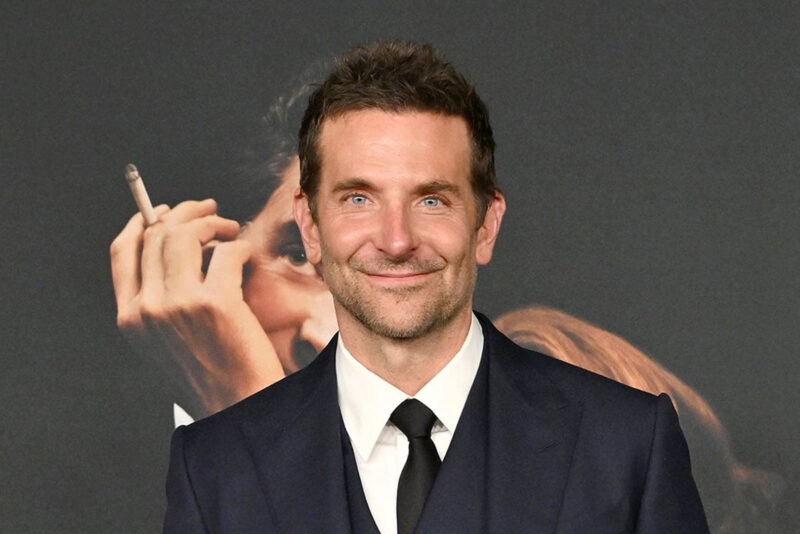
I remember we were cutting and Sean turned to me and said, “I just texted Bradley Cooper that Michelle Tesoro is an editing goddess.” I thought, “Okay, that’s weird, but all right.” What it translated to was that when Sean was screening the final cut of Flag Day for some friends, Bradley saw it and asked about me. So, we met and worked on what we now call the proof of concept for Maestro. It was a series of camera tests that we fashioned into a proof of concept for the film.
MF: The movie is called Maestro, so presumably it’s about conductor and composer Leonard Bernstein, but it is more than that. As Bernstein’s wife, Felicia, factors into the story every bit as much as he does. What did Bradley say to you about what he wanted to focus on in this film and what he wanted audiences to know and to feel about these two people?
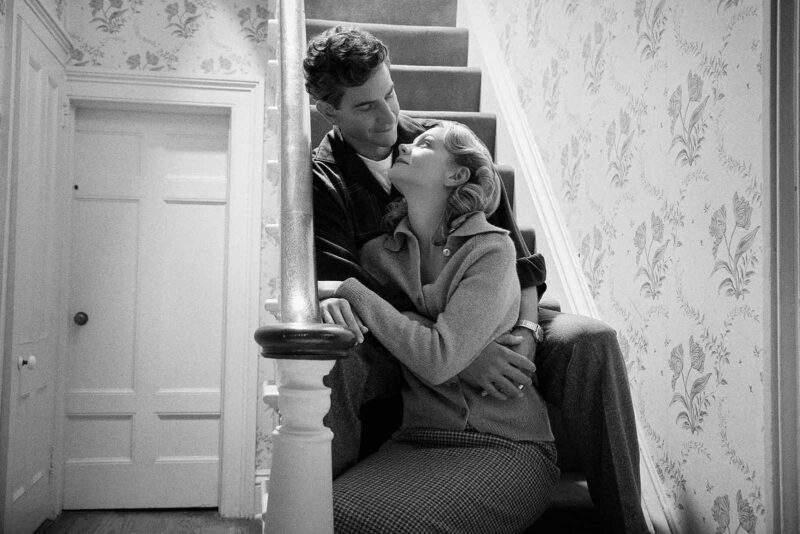
Michelle Tesoro: I think he wanted to tell a story about marriage and he wanted to show just their particular kind of love.
MF: Knowing where to start films is tough in general. Especially biopics, where you have to encapsulate someone’s life. It can be difficult to sort that out. You start with a quote from Bernstein, followed by a scene of him as an older man. He’s playing the piano at home in front of a camera crew, and he’s moved to tears by this piece that he’s playing.
He tells the crew about how much he misses Felicia and that he sometimes sees visions of her around the house. It’s a pretty well-thought-out way to start things. Were there other things that you tried and that’s where you ended up? Or was it shot and edited as scripted?
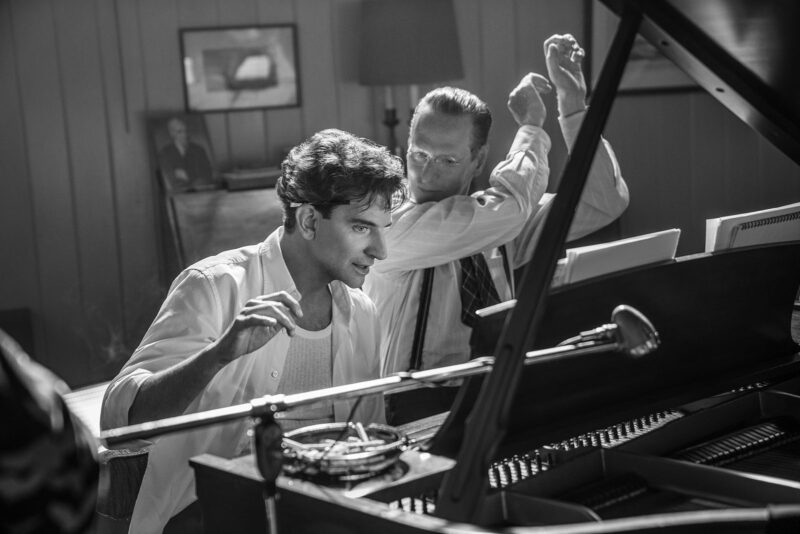
Michelle Tesoro: That particular scene was not in the original opening of the script. Bradley originally wanted to open it on what is now the next scene, which is where the phone is ringing in the dark and we overhear a young Bernstein get the call about being the replacement and running out into Carnegie Hall.
We ended up starting with that interview scene, which is in color. They actually filmed that entire interview near the end of production. If you’ve seen the film, you’ll know we also close with that interview, where Bernstein is in the red sweater in 1985.
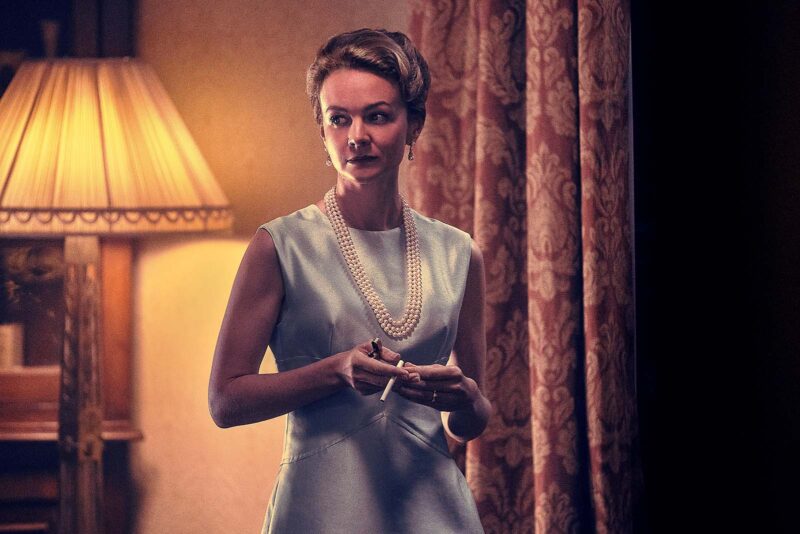
Initially, we thought that was going to be the end. We were going to tell the story chronologically. But we decided that we needed to ground the film in the idea of Lenny and Felicia. And we felt like the interview scene did that. It was important to do that in the beginning and to wrap it up at the end as well.
MF: The quote from Bernstein that opens the film goes, “A work of art does not answer questions, it provokes them; and its essential meaning is in the tension between the contradictory answers.” When you read the script, the work of art in this case, what questions did it provoke in you that you either asked Bradley or just tried to solve on your own?
Michelle Tesoro: I don’t think I had a lot of questions. I think what the quote represents is how Bernstein lived a life of contradictions. His life was like a work of art. He loved everyone and everything and wanted to do everything.
In the film, we traverse a lot of time periods in their lives. I think when you’re thinking about contradictory actions and contradictory feelings, the quote is meant for you to consider what that means. How did those contradictions give his life meaning? Don’t we all sometimes do contradictory things? It represents living a dynamic life.
Bernstein lived a life of contradictions. His life was like a work of art.
MF: The last interview I did was with editor John Poll about The Color Purple. I don’t usually ask questions about the producers of a film, but his producers were Steven Spielberg, Quincy Jones, and Oprah Winfrey, so I had to make an exception. With Maestro, not only do you have Bradley Cooper as a producer, but you have, again, Steven Spielberg and Martin Scorsese, among others. Tell me about the influence they had on the film and any interaction you may have had with them, either through notes or directly in the cutting room.
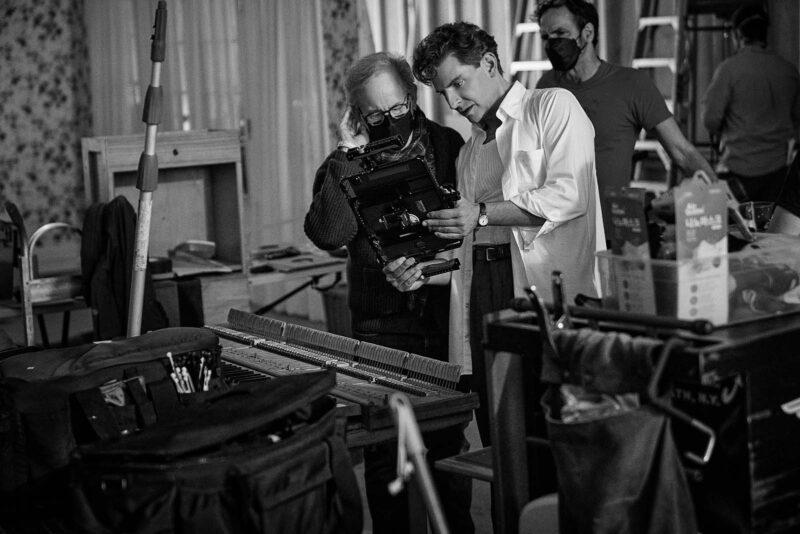
Michelle Tesoro: Steven had a lot of interaction with us after Bradley had finished. Bradley was very open about where we were in the editorial process with everybody, including Steven. We didn’t wait for a full director’s cut to be done before we showed all the producers a cut. We would show bits and sequences to Steven. He and Bradley had a very close rapport. They would text messages back and forth. I think there are a lot of interviews where they talk about all the text messages they sent. I think iMessage and WhatsApp is Bradley’s communication of choice.
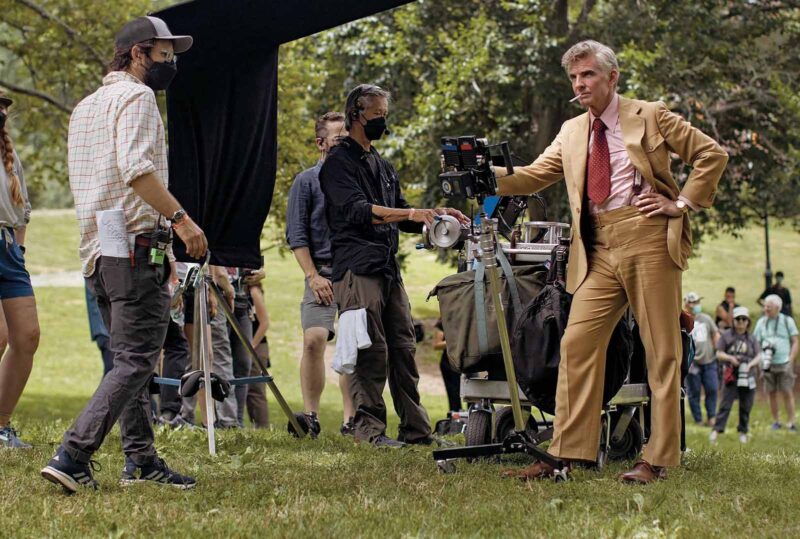
They had a very lively interaction and Steven gave us a lot of good ideas about the film’s strengths and what needed help. Bradley and I would take those ideas and think about how we could address them individually and how we wanted to address them in Bradley’s specific style of storytelling. We weren’t trying to make a Steven Spielberg movie. We were making a Bradley Cooper movie. We were trying to make a movie that would represent Letty and Felicia, because, as you know, sometimes a film tells you what it needs and you can’t force a lot onto it.
We weren’t trying to make a Steven Spielberg movie. We were making a Bradley Cooper movie.
Having said that, Steven was a very active producer. With Marty, we showed the film to him a little bit later in the process. He had a few notes, but the film was in a different stage at that point. We had worked out a lot of things and it had music and sound work and all the stuff that makes it a different experience than looking at a rough cut.
Marty had feedback and we did the same thing that we did with every other producer. Fred Berner, Amy Durning, and Scott Stuber at Netflix always like to listen to what everyone has to say. Then, we apply our methods to address their thoughts.
MF: Immediately following that opening scene, which is shot in color with a 1.85:1 aspect ratio, you jump back in time to a younger Bernstein and it’s in black and white with a 4:3 ratio. Then it goes back to color, but still 4:3. And then, after Felicia passes, it returns to color in 1.85:1 Please tell me why Bradley wanted to go that route. Was the changing aspect ratio ever debated during post-production?
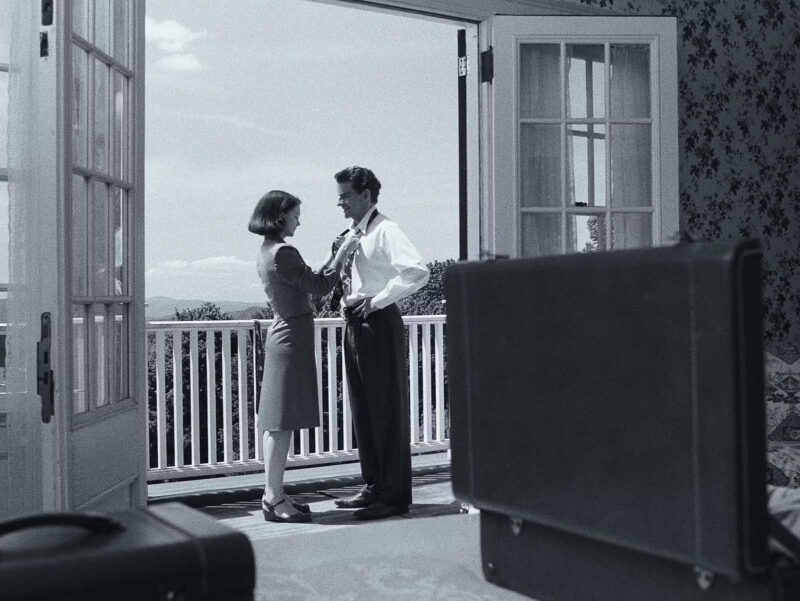
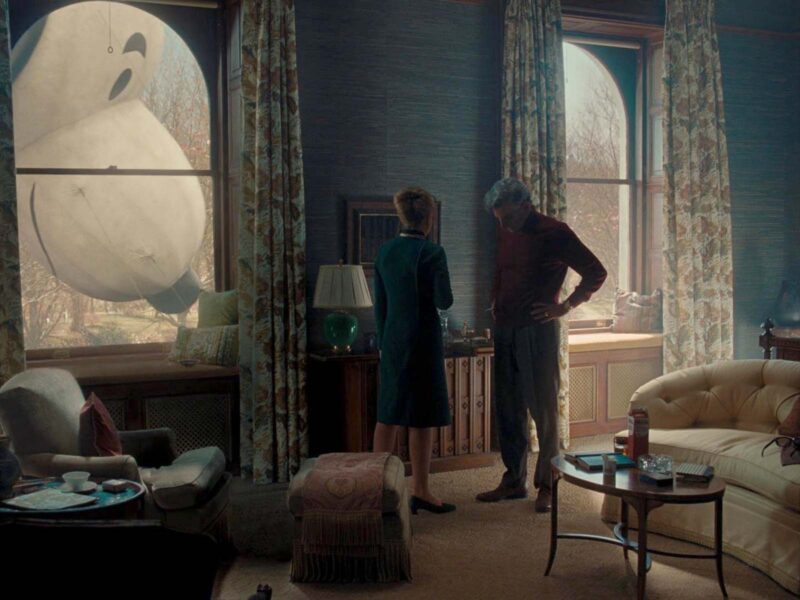
Michelle Tesoro: No. I think Bradley had thought about it in pre-production. When I first started working with Bradley, we worked on that proof of concept I mentioned earlier. With all those camera tests, we were experimenting with different aspect ratios. I think he felt like the story lent itself to foreground and background. He also liked using the entire height of a container, you know, and not necessarily needing the entire width all the time.
I think he also wanted to tell the story in terms of their well-documented life. If you look up their life, it’s so well documented and you would see them in black and white photos. He would see them in a 1.33:1 video and think perhaps if we stayed within the ratio and medium in which we would have seen them at that time period, it would just give more of a sense of being with them.
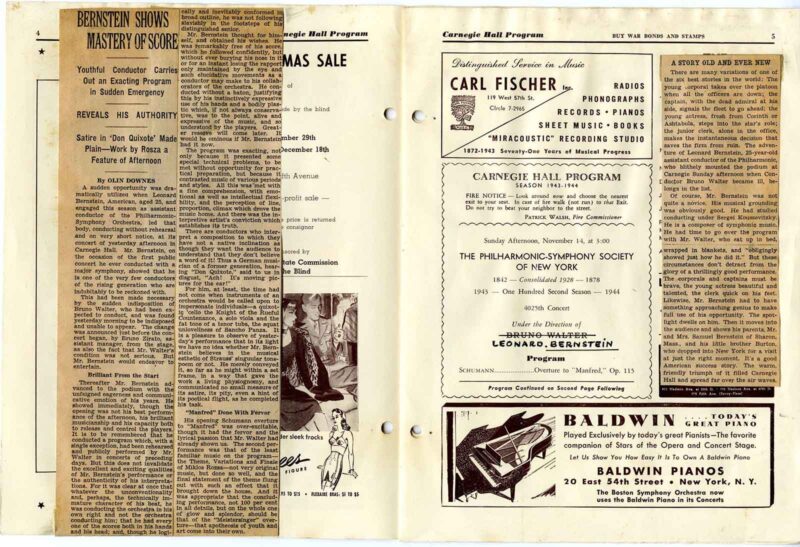
MF: In the first scene of young Lenny Bernstein, he gets a call to fill in at the New York Philharmonic in Carnegie Hall for a live broadcast. He jumps out of bed and then what follows is a oner of sorts. It transitions to an overhead shot following him through the apartment into the hallway and then flies around the concert hall and backstage. Can you give me a rundown of how that came together and the techniques you used to pull it off so well?
Michelle Tesoro: There are a couple of invisible edits when he gets out of bed and runs to the balcony of Carnegie Hall, and then again when the camera is flying around backstage. That idea had been living in Bradley’s mind for years. I think it’s an example of a director having a specific vision, being able to tell all of the department heads what it is, and everyone executing exactly as he had imagined it.
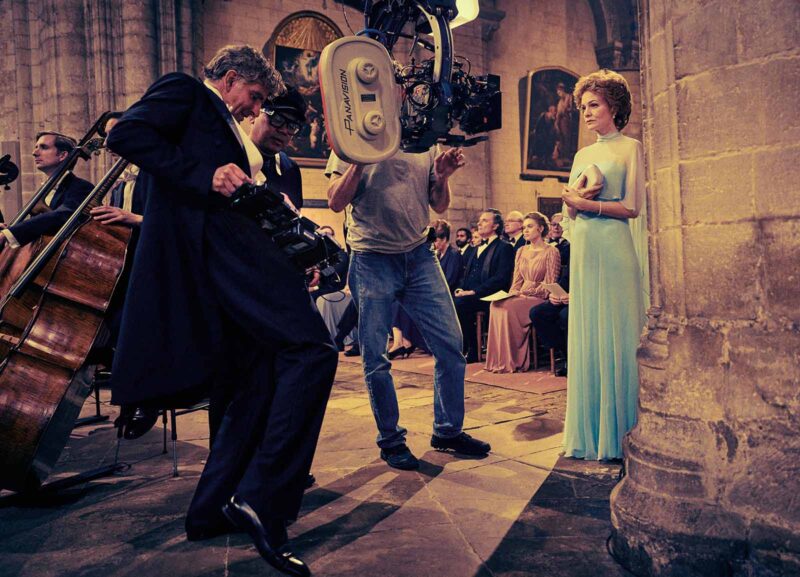
At the end, there’s a dissolve right on what is what we call the downbeat rest. Bradley wanted to capture a moment of the aftermath of having succeeded in Carnegie Hall. He wasn’t sure at the time where that scene was going to go, but he felt like it was important to capture. There were times when we had that moment at the end of the film. We were never sure, but we included it because we wanted to make sure that the audience knew that there wasn’t any question of how successful that evening was.
MF: In that scene, before Berstein walks out on stage, you hear a radio announcer explaining what is happening. The sound is treated as if it’s diegetic. The voice sounds like it’s coming out of a radio, but there’s no radio visible in the backstage area. Was that something you added in later to help provide context for what was happening?
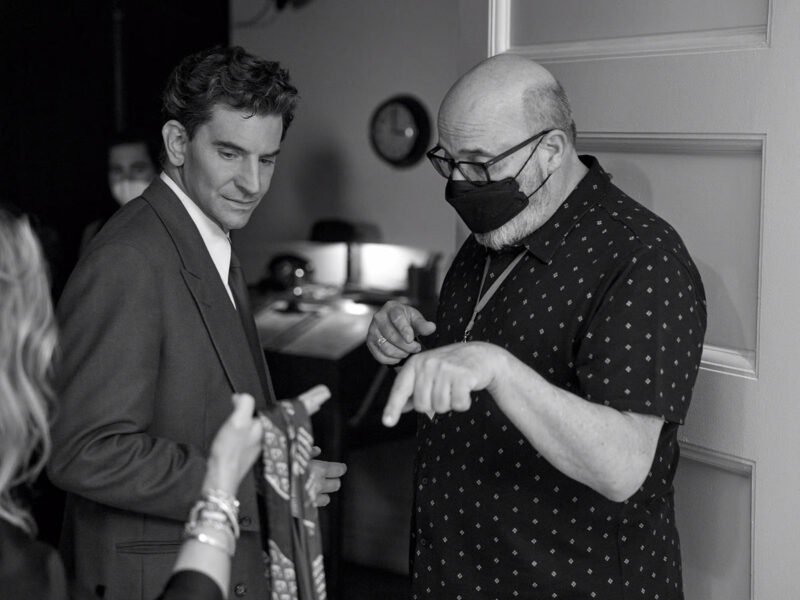
Michelle Tesoro: Bradley wrote that in because that is the actual live broadcast. If you go to YouTube, you can hear the audience in the background clapping halfheartedly, and Bernstein conducting, because it was a live radio show. So Bradley wrote that in the script. It was always a part of it.
I think we played with the idea of the radio being in the room and it kind of went in and out. But I think it sort of works as a voiceover and through the magic of editing you can be in two places at once. You can be at home listening and also experiencing it from Bernstein’s point of view.
MF: There is a lot of exposition when it comes to encapsulating someone’s life. How did you make sure the audience knew enough about Bernstein and Felicia, but not to the point that it hurt the film?
Michelle Tesoro: I think we always struggle with that, don’t we? Luckily, we had devices such as the CBS announcer to give you that backstory in a creative, exciting way. In the dialog as well, especially when we meet Felicia, we get to know a little bit of who they are.

There’s a scene where Leonard and Felicia are standing at the window getting to know each other. As a viewer, you’re getting expositional information, but you’re also getting emotional information. You’re seeing that they’re connecting, yet you’re also understanding who they are at that moment. We had to juggle that throughout the film because we covered many decades of their lives. We had to keep replanting information, saying, “This is who they are now. This is where they’re at.”
MF: Maestro reminded me of a discussion I had with Kevin Tent, ACE and Alexander Payne about The Holdovers. In that discussion, Kevin talks about when not to cut. Maestro has a lot of scenes with little visible editing, and it’s often between Leonard and Felicia. These are intense, dialog-heavy scenes. Was that an aspect of the film that was committed to in production? Or were there alternate angles, inserts, or cutaways that you could have used, but didn’t?
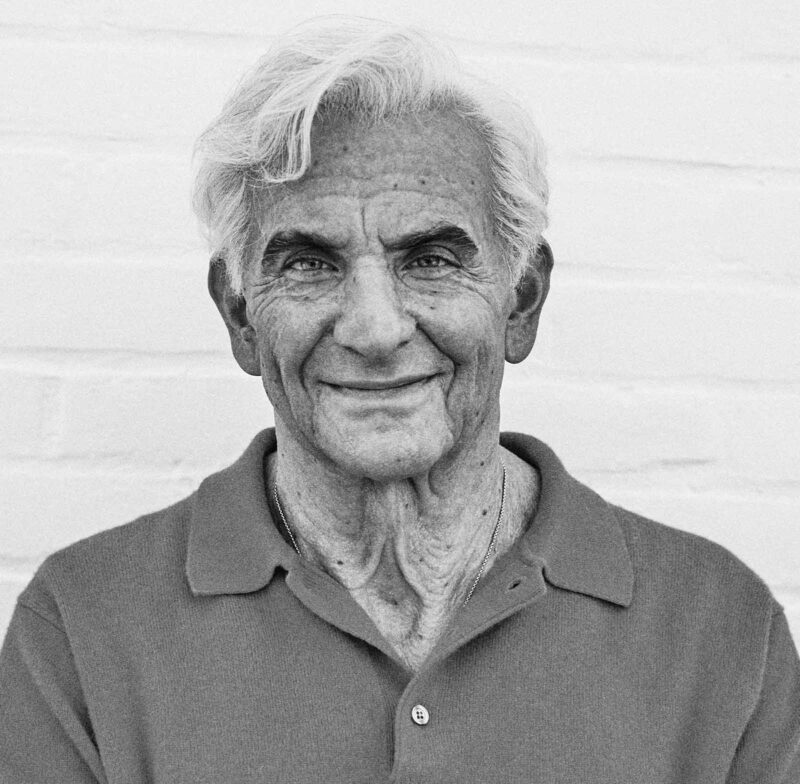
Michelle Tesoro: Most of the time, they were committed during production. I think Bradley wanted to commit to how he thought the scene should play out in the film. I think the longer we shot, the more committed to that style he was. There were very few instances where we had a boatload of coverage that we could cut to. When you watch the film, if you see a scene that has several different setups and angles, then that’s what the coverage was. And we used it all.
I like the idea of every edit being invisible. I don’t want an audience member to be thinking about the editing. But I suppose by not editing you are also making a dramatic point about the editing. I love what Kevin said about it. It’s true because the idea of this film was more about finding the rhythm of the entire film, not just the rhythm created in one scene. It’s about how editing creates a rhythm throughout the whole film.
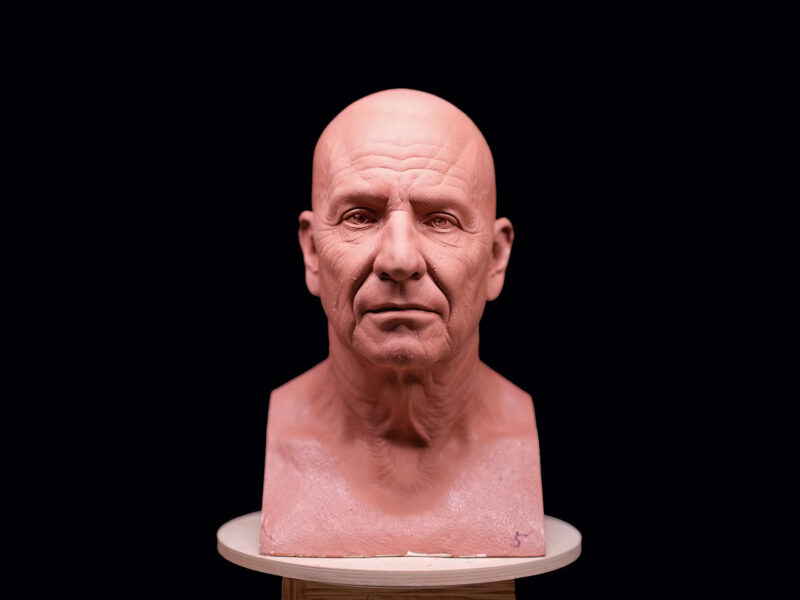
MF: Did you rely on things like splits and Animattes and Fluid Morphs to fine-tune those long dialog scenes?
Michelle Tesoro: Sometimes, but very rarely. The only time maybe we played a little bit with the tools of time, as I like to call them, was when Leonard and Felicia were first getting to know each other in the little theater. She’s performing her play and they’re playing the kiss for the first time. There are edits there, though, if you’re looking and paying attention. The Thanksgiving Day sequence was just one take. We only got four takes of that, I think. I picked one take and I put it in and that was it.
MF: You picked a good one. Some of these scenes seem like they required some close collaboration between you and Bradley during production. Where were you cutting? Were you on set? How were you communicating with him during production?

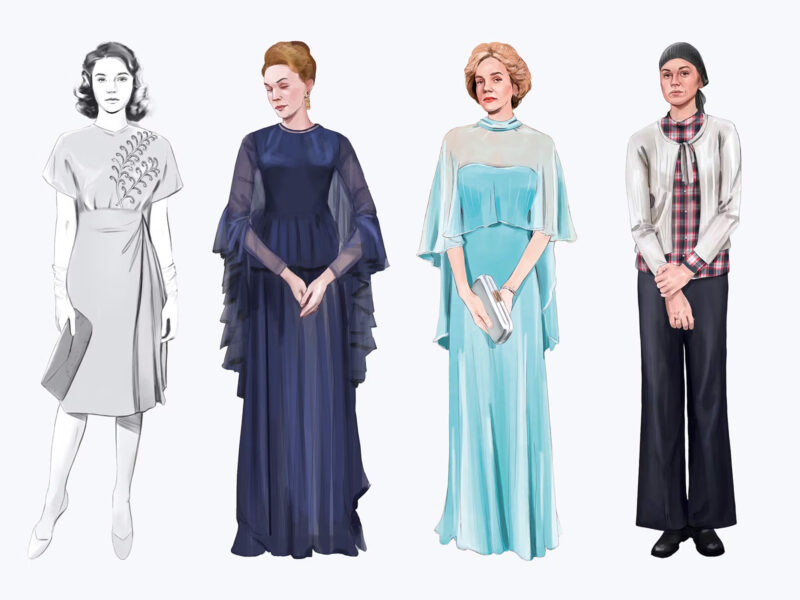
Michelle Tesoro: I was not on set. Bradley keeps a closed set for performance reasons, so there are no distractions. Also, we shot this from 2022 to early 2023, so there were still a lot of COVID protocols. I didn’t need to be on set. But that doesn’t mean that we weren’t in close collaboration. Sometimes he just wanted to talk on FaceTime. So we did a lot of that.
It was a lot of back and forth during production while he was shooting. Bradley always made time to look at whatever I wanted to show him. If he wanted to see something, he would ask for it and it would be a direct collaboration.
He saw so much of the film edited as we were doing it. The only delay was just waiting for the film to be processed. For the black-and-white film, it was maybe two-and-a-half days. The color took maybe two days. But you had to wait because the film had to be sent to FotoKem in L.A. and put in a bath, and there was only one bath for black and white per day. If we missed the drop-off, we lost a day.
Sometimes I felt a little behind Bradley and wanted to know how he wanted something to cut to another. I kept trying to get video clips from the set for reference. It wasn’t until the very end of production that someone finally said, “Yeah, we can send this to you.” Next time, now I know exactly what to ask for, but it’s hard when production has a lot to deal with. The last thing they want to deal with is another drop-off to editorial.
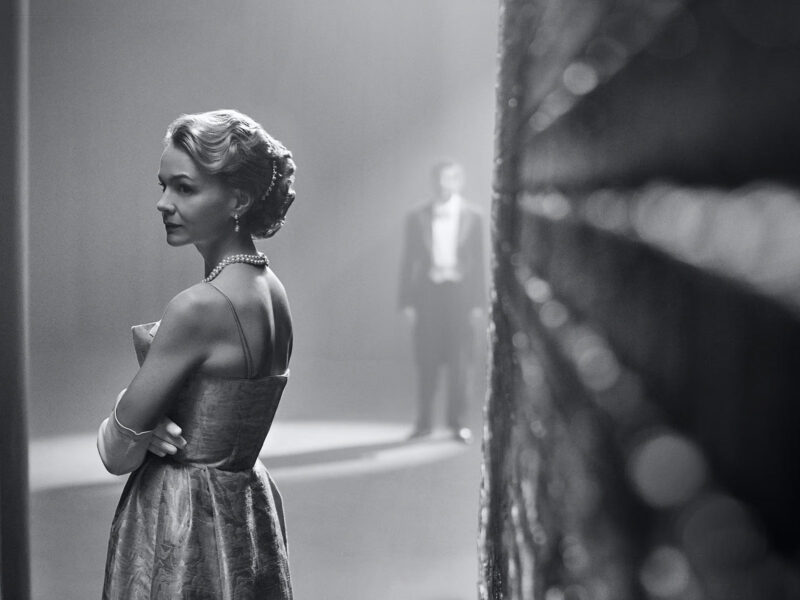
MF: That Carnegie Hall scene is not the only elaborate visual in the film. There’s a scene with a dance sequence set to a song from On the Town. Again, it’s like the Carnegie Hall sequence. You’re breaking the rules of time and space. Leonard and Felicia are sitting in the audience and suddenly they’re on the stage with the sailors, and then Lenny is one of the sailors. I’m interested to hear how you executed all that so perfectly.
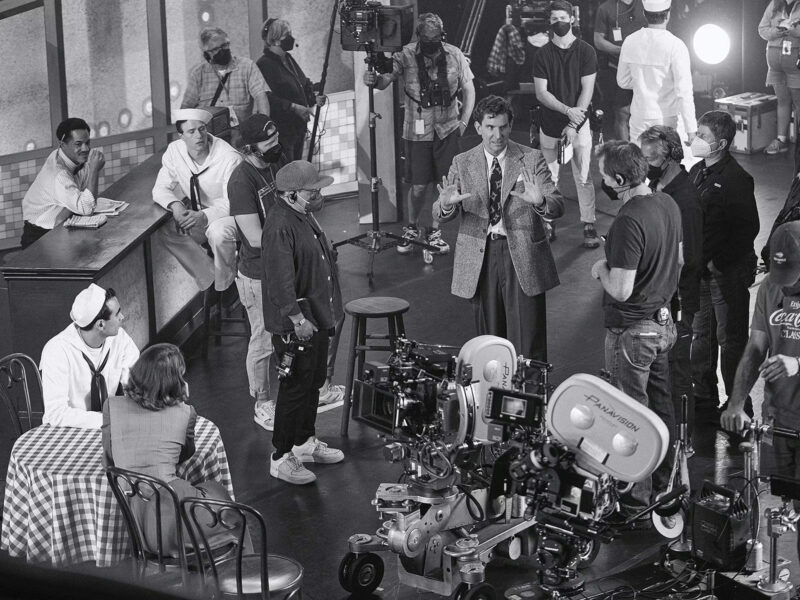
Unlike Carnegie Hall, this scene has a very specific undertone. You can see that Felicia is beginning to understand that Lenny might be able to give up the silly music, but he will never give up who he is, which is a closeted gay man. I’m interested in how you work to get that story point across in a scene with no real dialog.
Michelle Tesoro: Subtext is the most important thing to cut with. In this case, you get the subtext from the performances. I can’t say enough about how amazing Carey Mulligan is in this film. Her performance sells it. It lets you know how she’s feeling, and they’re complicated feelings!
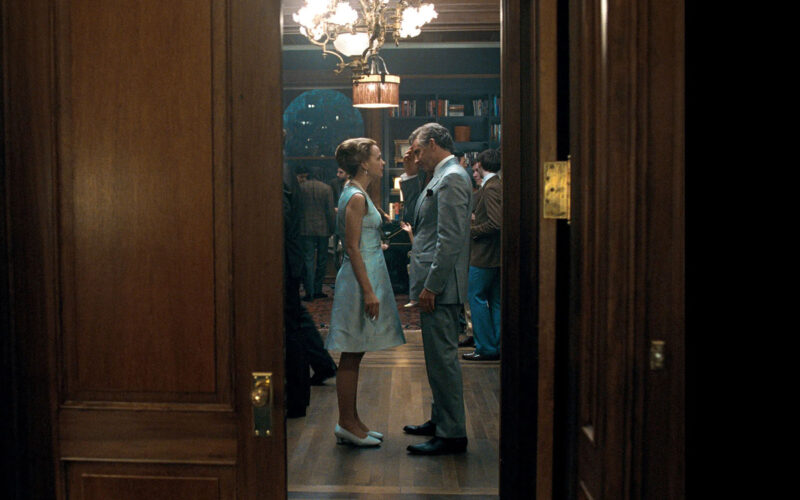
I also think the dance itself tells the story. Bradley used it as a way to show you how they’re going to come together and be pulled apart in their life. They’re both going to be in this mix. It’s also important to note that Lenny didn’t only want Felicia. She wasn’t the only woman in Lenny’s life. He loved other women as well. I think their situation would be considered an open marriage now.
I think that the sequence was very well choreographed. It was Jerome Robbins’s choreography, but Justin Peck and Bradley collaborated to find parts of the real choreography from these musicals that would represent the story that Bradley was trying to tell. Technically, it’s all very precise.
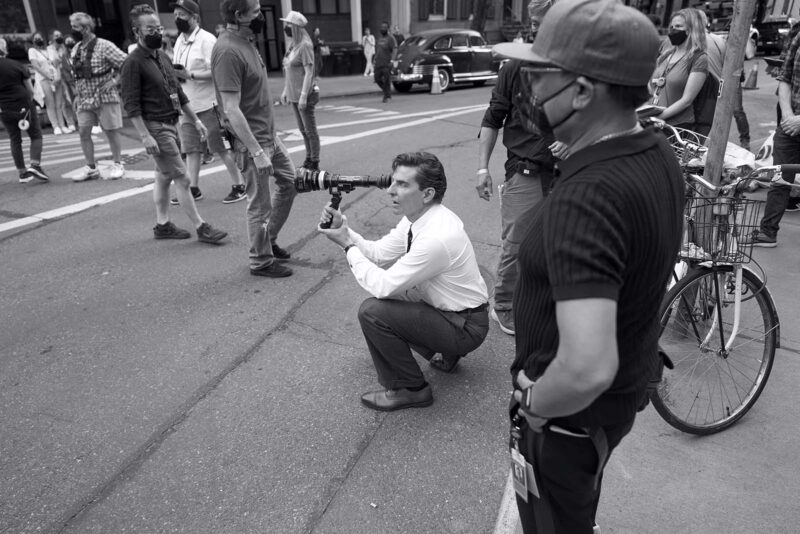
We were working with the visual effects team Phosphine and John Bair was our visual effects supervisor. They were always on set when we were shooting these pieces. We would see the previs of it almost immediately after it was shot, so I knew how leaving the picnic table and coming into the theater hall was supposed to play. From that point on, it was just about cutting the ballet, which is always so fun.
MF: With a movie called Maestro, you would think temp score might be a challenge. Everyone’s process is a little different. Knowing that Bernstein’s music was already in the script, were there guidelines or rules about how to spot his music?
Michelle Tesoro: Most of the cues were already written into the script. There were a handful that were not, but Bradley had them in his mind. He said, “Here are the tracks that I want to use, I just don’t know where they should go yet. But please load them into the bin.” As we assembled and honed the reels, we would naturally find a place for a cue. Usually, it was Bradley driving that. But we didn’t start that until we were comfortable with where the reels were. Once we had the music that was already written into the script placed, we went back and did a whole pass where we tried different musical cues in different places.
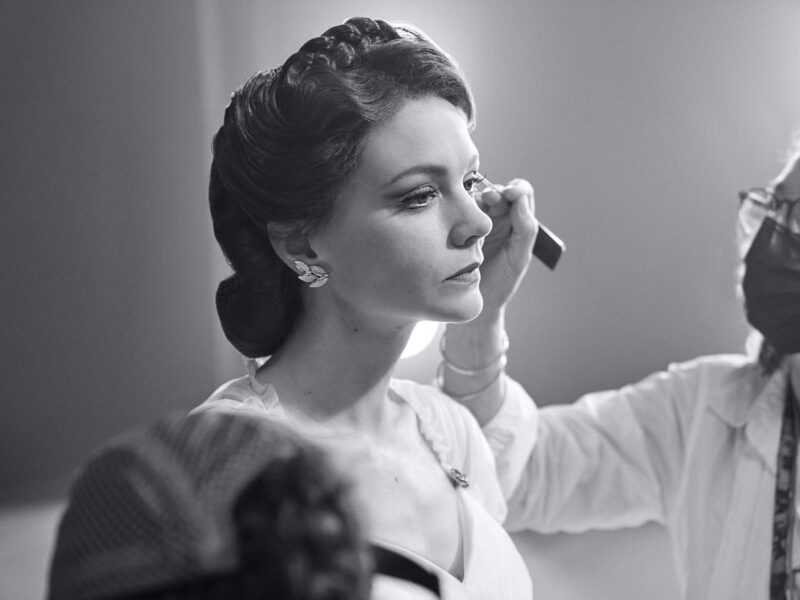
MF: Did you only have the finished compositions to work with or did you have access to master recordings? Could you manipulate any stems if you needed to?
Michelle Tesoro: We did not have any stems. We just had the master recordings, and a lot of times that’s fine. In the beginning, when we were working with it, we needed to feel whether the cue was appropriate. We had to figure out if it fit in with the timeline of the story. I think that was key. But the tone was also prominent.
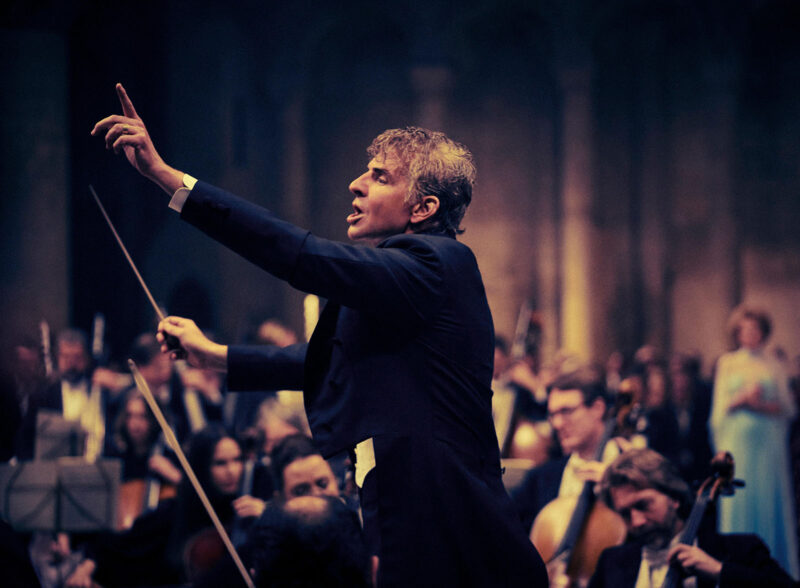
Once we started the mixing process, Bradley decided, “Hey, these are the cues that we’re going to re-record so that we can have stems.” In the beginning, I think we had three sequences that were recorded live. You’ve heard the story of the sixty microphones. But there were only three of those where we had live musicians and we had access to different stems and things like that.
For everything else, we had the two-track masters from actual Bernstein-conducted music. At that point, we said, “We want this cue because it needs to match what we recorded.” When we got on the stage, we discovered there was a huge discrepancy in sound.
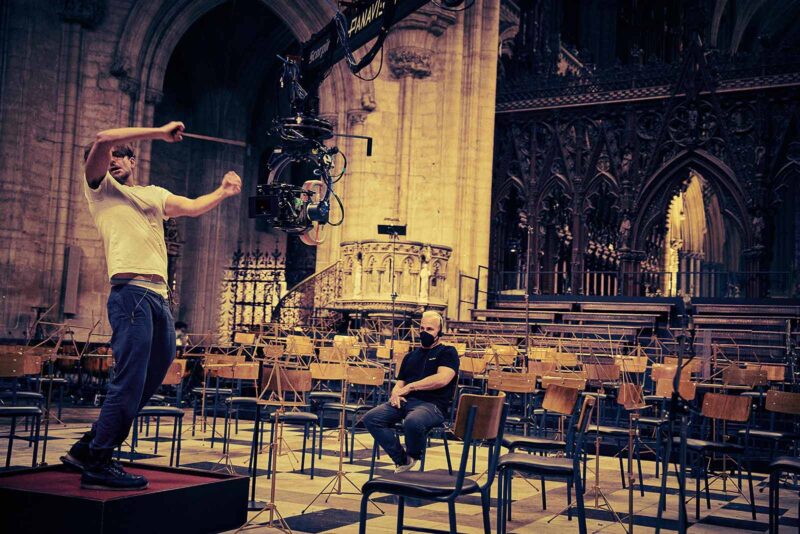
One can take a master and sweeten it to try and match it, which we did in the case of the Adagietto of Mahler’s Fifth. We were able to do that there, and it’s wonderful to hear. You can hear Bernstein’s breaths. It’s lovely to have his ghost in there a little bit. But for the other cues, especially if they were part of the score, it was great to have a rerecord and be able to fill the room that way.
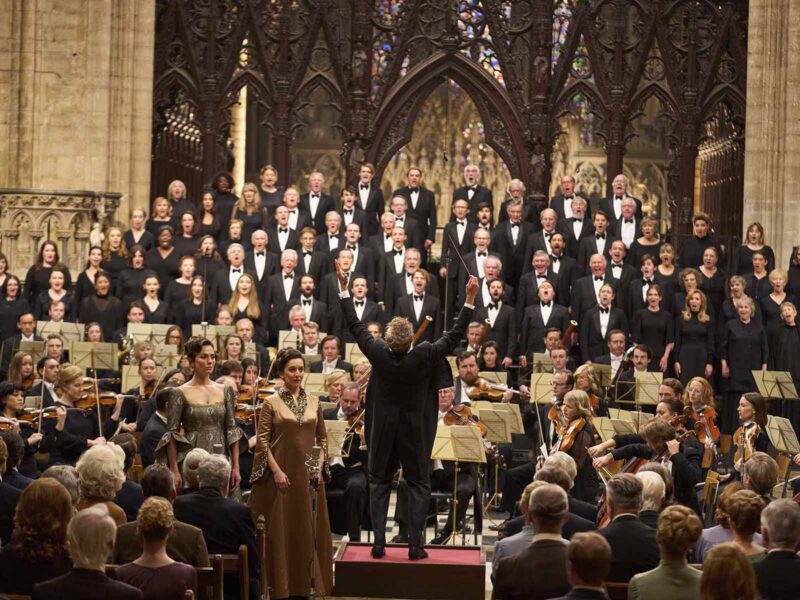
MF: We talked about ways to tighten scenes visually, but we didn’t talk about doing it for dialog purposes. The black and white and the 4:3 elements make Maestro feel like a movie from the 1940s, and the dialog is kind of in that style as well. It has a rapid pace. The characters’ lines often run right up against each other, overlapping. Was there anything you did to create or reinforce that style? Either way, did that style present any challenges for you in doing the editing?
Michelle Tesoro: No. As the director, Bradley is controlling the pace of the scene. I didn’t have to do any of that. I think that was part of their natural conversation and something that I believe they wanted to enforce with their performance.
Now, did this present a challenge to sound? Probably. If we weren’t happy with the overlaps, that might have caused an issue. But we liked the overlaps. We wouldn’t have put them in the film if we didn’t like them. I think that’s more of a question for the sound guys than for me.
MF: As far as the sound design goes, it felt like there was a conscious choice to lay back on the sound design. I noticed that in a scene where Felicia’s having lunch in a restaurant. Even though the restaurant wasn’t too busy, there wasn’t a lot of restaurant noise. Also, there’s a scene where Lenny is taking Felicia to a doctor’s appointment. Again, it was very quiet. What was your approach to the sound design for this film?
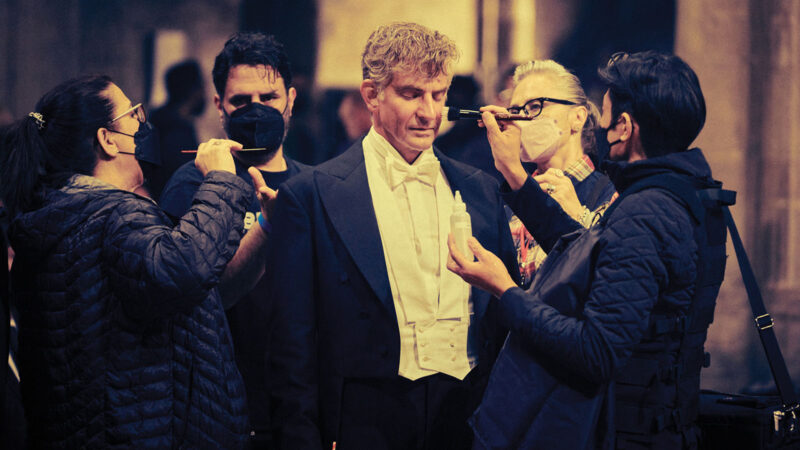
Michelle Tesoro: Bradley is very particular about the sound. I think there was an effort made to not have any distractions. You want to focus on the scene at hand. There’s something about putting in a sound that makes it feel like it’s just a normal day, instead of having the focus on what the characters are saying. I think that Bradley just didn’t want to fill this movie up with a bunch of sound effects.
I didn’t realize this until I was on a panel with Tom Ozanich, who was one of our re-recording mixers. He was talking about the scene at Cherry Lane Theater and how they had to clean up all the sound because the black-and-white camera was so noisy. They had to fill the sound back in. But what he did is so subtle in terms of the air in the room, the feeling of the space, and how much their voices echo off the walls. That’s a scene that doesn’t have any music until the very end. But design-wise, it has things in it.
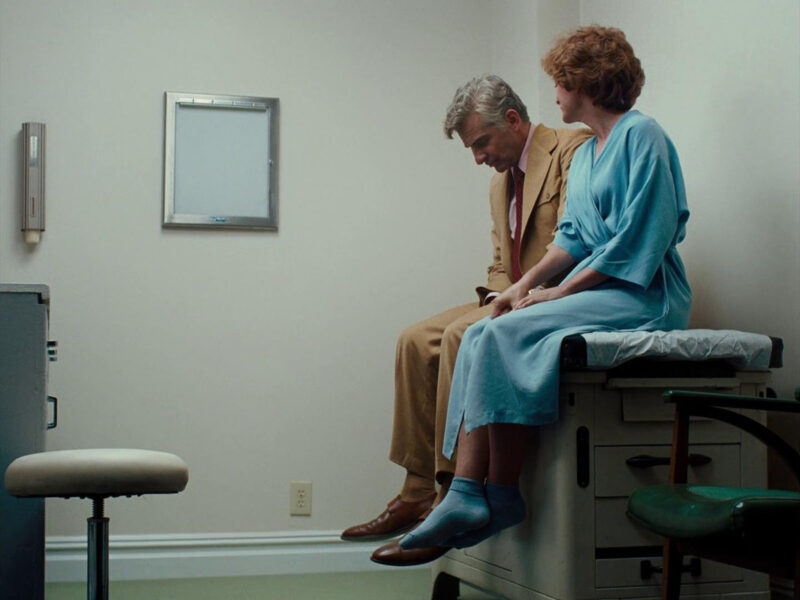
I remember we found this buzz from the ghost light that’s in the center of the stage. It comes and goes. We kept that from our rough cut into the final mix. We tried to be very delicate with the sound design, just as we did with the cutting. We were minimalist. We decided it was more important to be present instead of just filling it up with stuff.
MF: As far as needle drops go, there are two that come to mind. Late in the film, “It’s the End of the World as We Know It (And I Feel Fine)” by R.E.M. plays from Lenny’s car stereo as he pulls up to an outdoor music venue. The snippet from the song we hear is when they shout “Leonard Bernstein”, which is a lot of fun.
It feels safe to me to assume that you had that needle drop locked down before shooting. But at the same time, I should ask about how you incorporated that song. Was it always nailed down from the beginning or was it a process?
Michelle Tesoro: It was not. I remember Bradley and I were cutting and he said, “Let’s try putting this in” and it was just a bit of a chuckle. I remember we lined it up so that when the car pulled around, you would hear “Leonard Bernstein”, and he just laughed. He enjoyed himself.
Bradley said, “Is it too much?” and I told him, “No.” I know you’re thinking, “Shouldn’t we see how he’s reacting?” but what’s better to be on? His face, or the back of the Jag where his license plate says “MAESTRO1”? Clearly, this is someone who is going to be playing a song that mentions him.
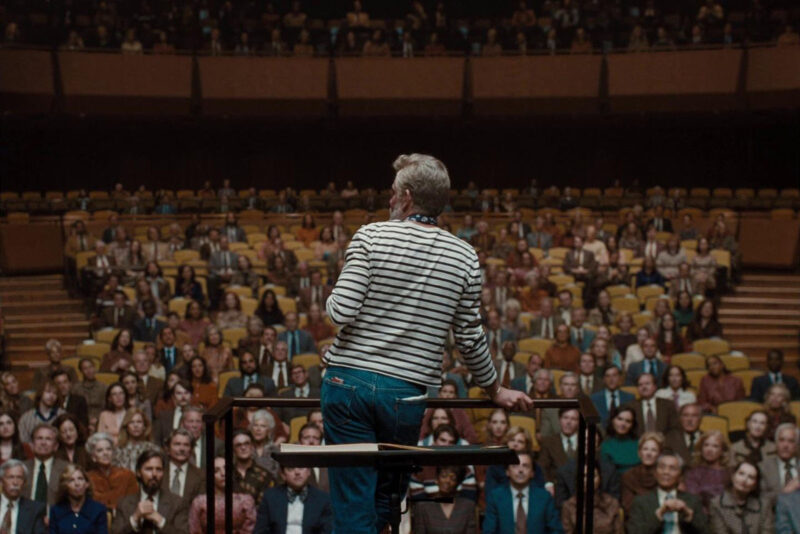
MF: I love that you guys found that in the cutting room. And I’m glad you went with it because it’s a great break at that point in the film. It’s a nice little note, no pun intended. Early on, we talked about using the radio announcer to provide context. But something you didn’t do was titles for characters, places or periods. Was that ever considered? And if it was, what were the factors for or against doing that?
Michelle Tesoro: They were considered. It wasn’t anything that Bradley planned in the script. It was one of these things where we had a version of the cut and people were worried that the audience would get lost in time. We tried it. We put in dates after we made a big time jump. All we put in was 1971 or 1985, or something like that. It made people think about it more. It made them focus too much on what year it was and what that meant instead of focusing on the emotional jump that we were trying to make.
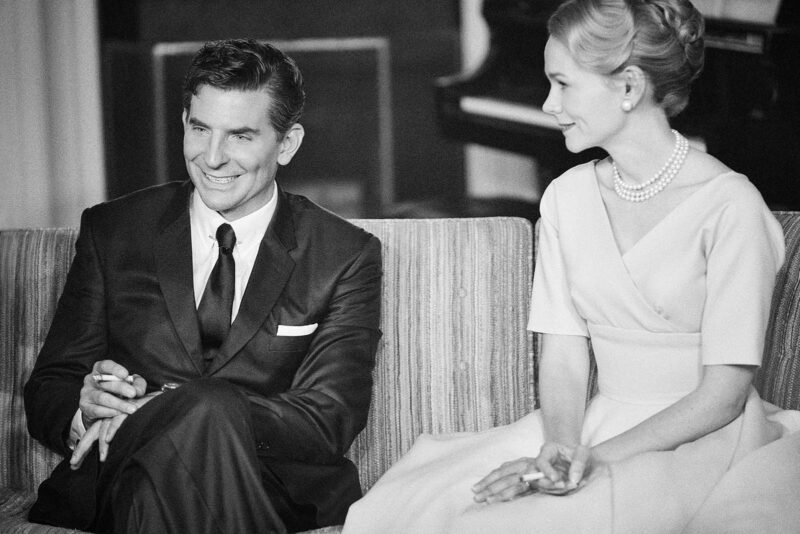
When you’re talking about a relationship, especially a long relationship that spans time, it doesn’t matter that something happened ten years or five years apart. It’s still themes that continue in their relationship. We felt like these jumps and emotional ties were strong enough that we didn’t need to tell you that it was 1970. That felt very arbitrary. It actually didn’t matter. So why present an audience with something that doesn’t matter? You’re just going to take away from your main emotional train of thought.
MF: I asked about beginning the film and the challenges involved with that. I should probably ask you about the equally challenging aspect of closing the film. At the end, you return to the interview that Bernstein was doing at the beginning of the movie. He says a few more things about Felicia and then asks the crew if they have any questions. Then it cuts to young Felicia in black and white and looking into the camera, and she turns her back and the title Maestro comes up. Then it cuts to black. The credits start, and you have footage of the real Lenny Bernstein conducting. Please tell me how you came to that ending. And I have to ask, is Felicia the real maestro?
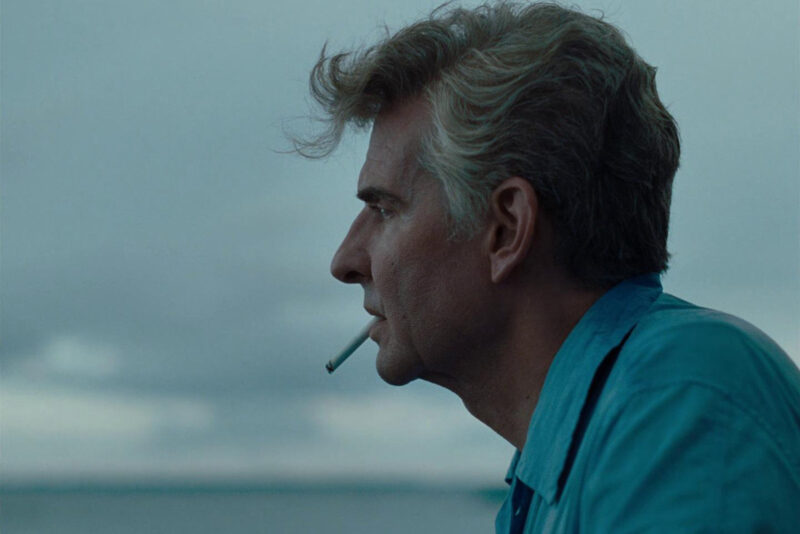
Michelle Tesoro: You hit the nail on the head right there. Bradley would be so happy that you got that because I think that is the idea behind where that title lands. We wanted to state that she is the real maestro. It’s more of a reinforcement that the story isn’t necessarily about Lenny and his career. It’s about the two of them and her impact on him.
MF: We started our talk discussing working with Sean Penn and now Bradley. This is not your first time working with a director who’s also an actor. Did you notice anything specific about his notes or direction that would speak to his experience as an actor?
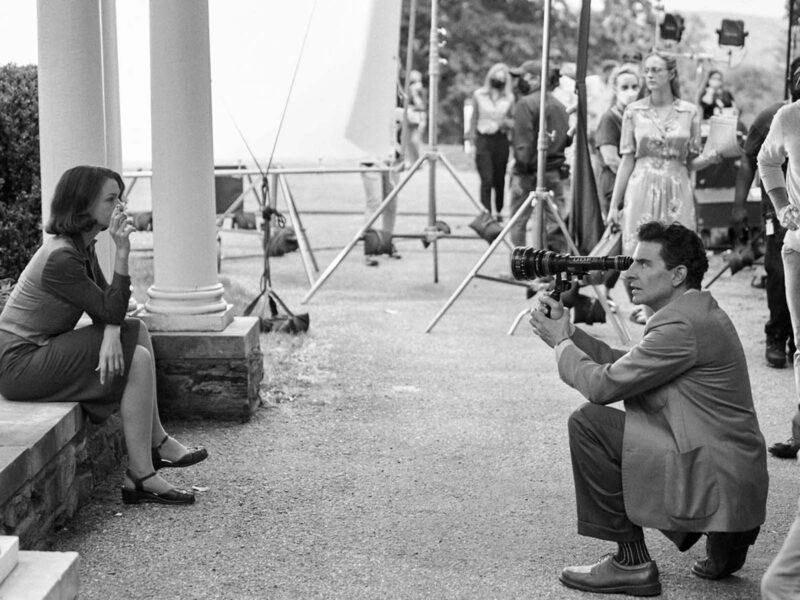
Michelle Tesoro: Number one, I never had any questions about performance. Usually, they would shoot and he would stop shooting after he got it. We usually used either the second-to-last take or the last take. In terms of that, there were never any performance notes. I never had to address anything like that because it was so obvious to me in the footage. Bradley doesn’t come at filmmaking from just the acting perspective. He has spent a lot of time in various editing rooms throughout his career, even from his time on Alias. He’s always been getting to know directors and seeing how everything is done. I haven’t been in his shoes, so I can’t speak to his experience personally. But I know that he is involved in every aspect. When I worked with him, it was very much like working with a director who happens to be a very successful actor.
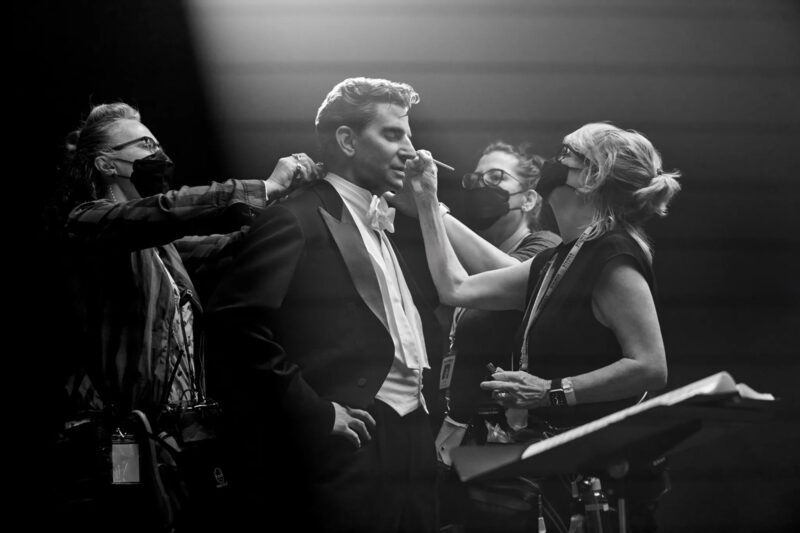
MF: This is a big movie and one that had a lot of expectations placed on it. What was the biggest challenge for you in cutting this film?
Michelle Tesoro: I think the challenge for me was to change my idea of how much to cut. Not that I was cutting just a cut. I always adhere to the ethos of cutting when you have to cut, when it calls for it. But this was something that I think I had to further restrain myself. And that restraint allowed me to open myself up more to the performances and having the film tell its story. I had to open my ears and let the film tell me what it wanted to do.
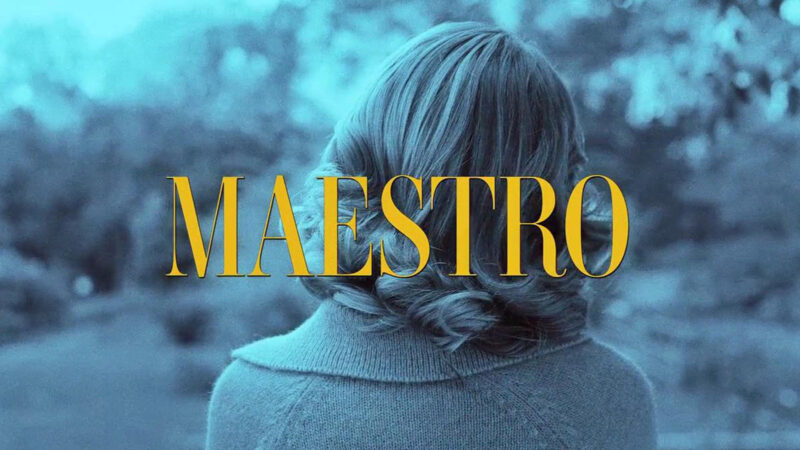
I had to look at the footage again and say, “What is essential and what is the strongest? And how can we use that in the least amount of cuts possible?” Not only that, but I had to find the waves and the rhythms in the film as a whole instead of just focusing on certain scenes. We didn’t have to focus on certain scenes when they were just one or two shots, right? The challenge was to tell a whole story that would span decades and keep the pace going through the whole thing.
MF: I asked if Felicia was the real maestro, but I think it’s you, Michelle. That was an amazing composition you put together. Congratulations.
Michelle Tesoro: Thank you, Matt.

